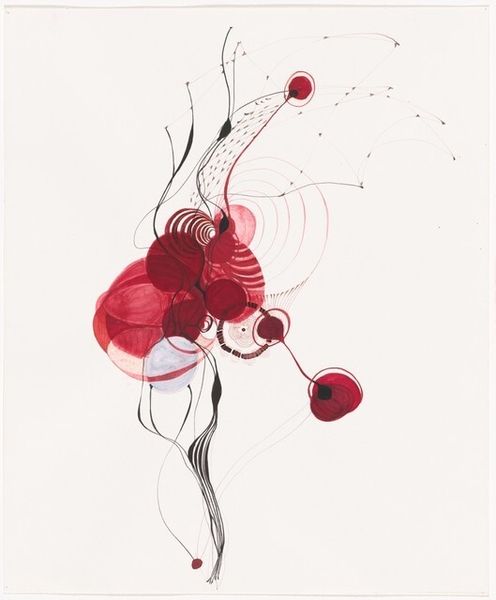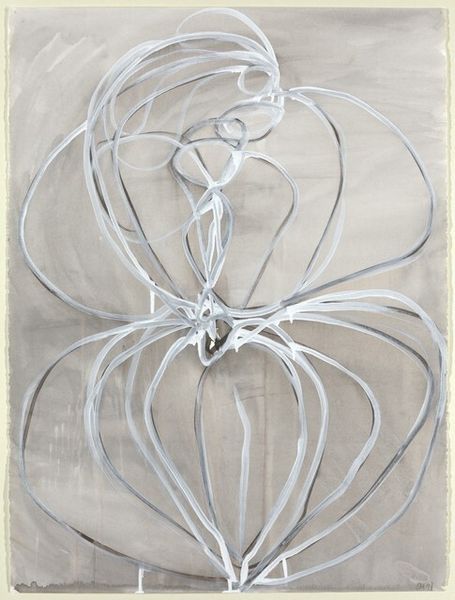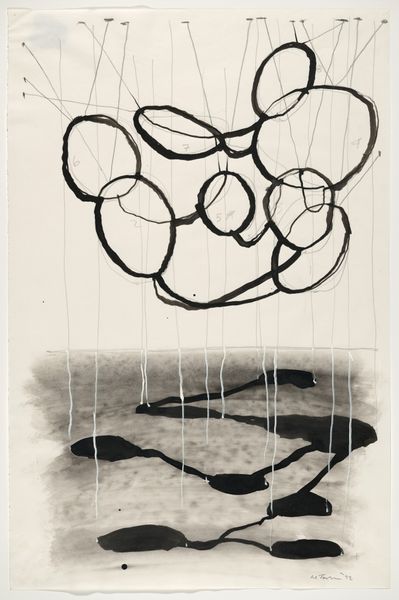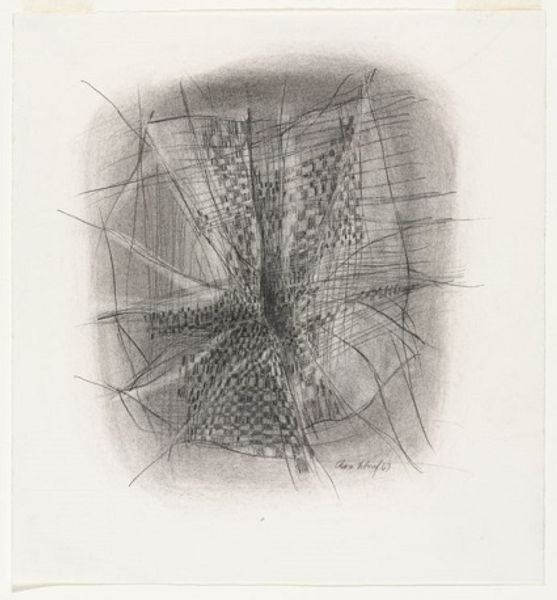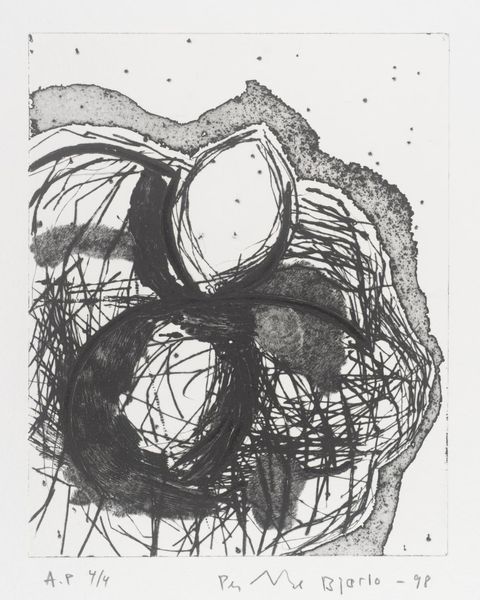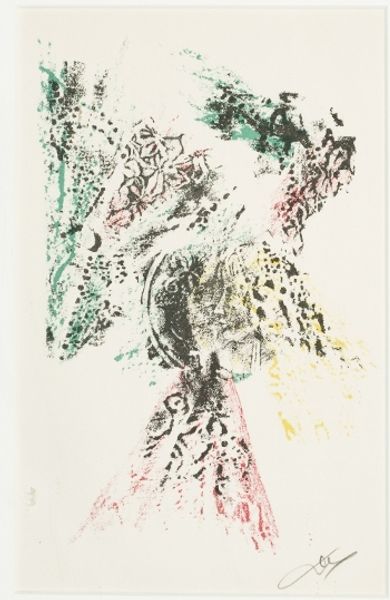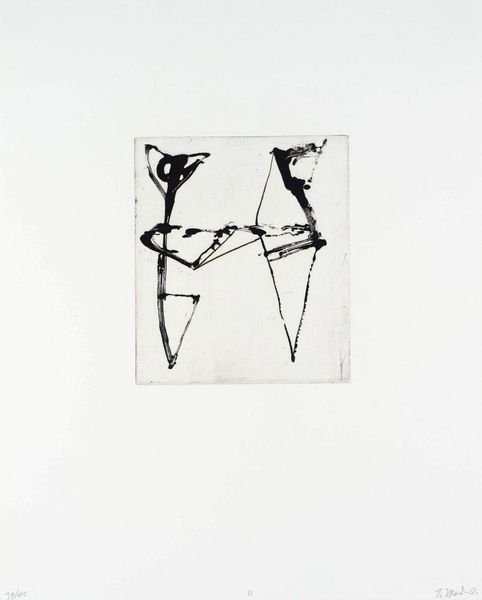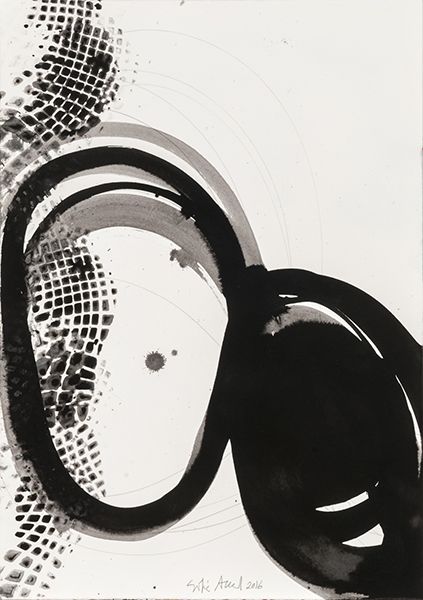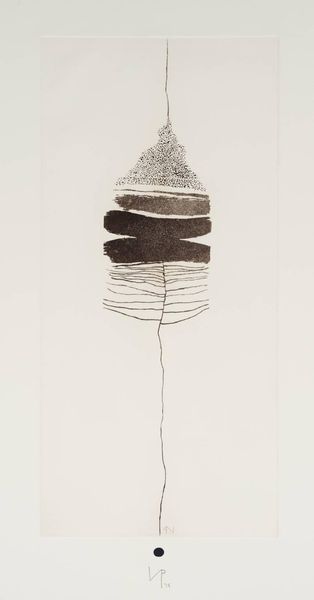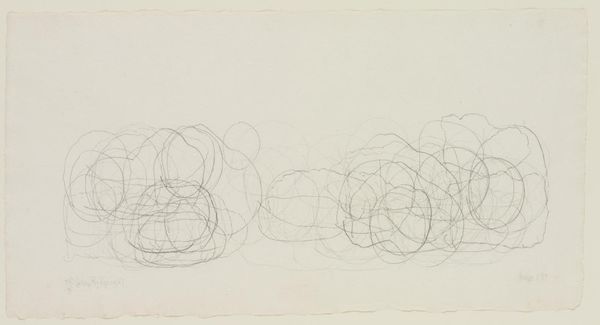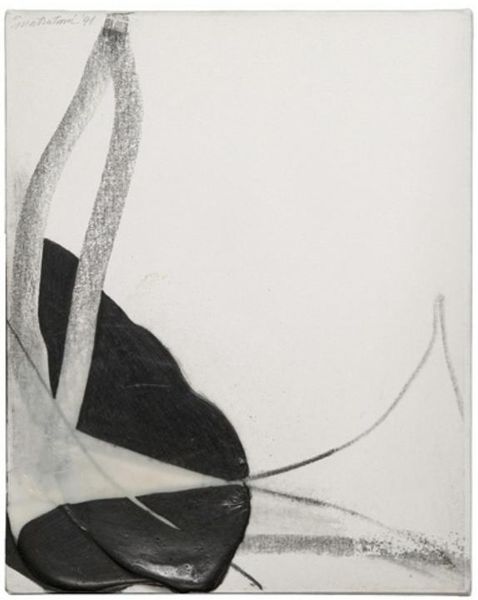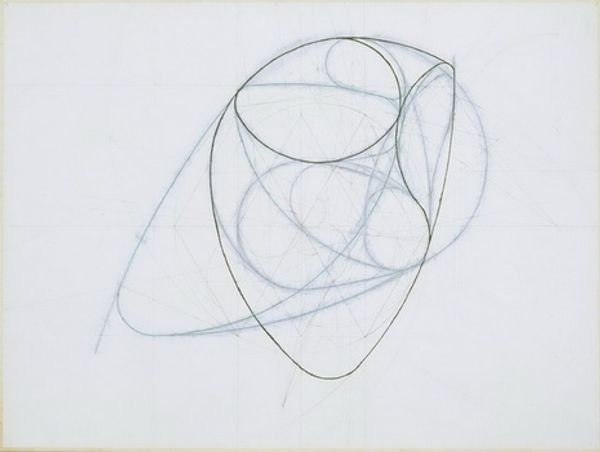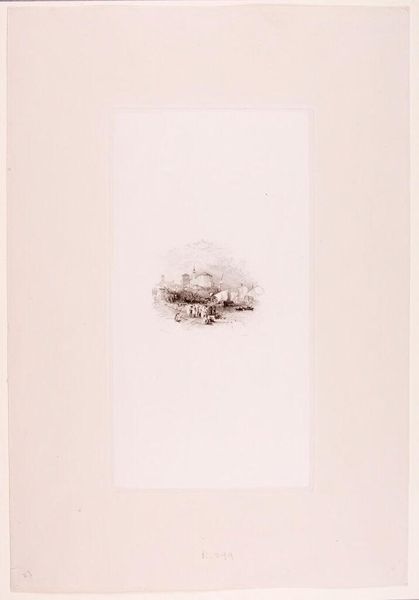
drawing, ink
#
drawing
#
abstract
#
ink
#
geometric
#
line
Dimensions: sheet: 70.49 × 50.17 cm (27 3/4 × 19 3/4 in.)
Copyright: National Gallery of Art: CC0 1.0
Curator: Right, so, gazing at Maria Teresa Rizzi’s 2014 piece, “Merging,” rendered with ink on what looks like a lovely sheet of paper... my first breath looking at it says, "quiet intensity." Editor: Immediately, I'm drawn to the geometry. Not hard-edged and precise, though; more like organic shapes wrestling for dominance. The circles remind me of cellular structures under a microscope. It also strikes me as both ethereal and visceral... a strange combination. Curator: I agree with that wrestling... the overlapping creates tension, almost like a Venn diagram of unseen forces. The repeated circles... they're not perfectly round, they have slight imperfections like planets with their rings just a tiny bit skewed, each orb wanting to burst. The dripped ink gives it that vulnerable, "about to fall apart" feeling, wouldn't you say? Editor: Absolutely! The imperfections are key. Those imperfect circles evoke the passage of time, almost as if each layer is a moment merging into the next. Considering the title "Merging", these forms appear like mandalas from lost civilizations... patterns embedded with cultural memory, constantly interacting and reshaping themselves. Curator: Right! And because Rizzi uses ink, there is also that symbolic pull to calligraphy and Eastern art. There's such a careful touch here, though... I'd wager these watery explosions of color, though loose in feel, were pretty carefully plotted. It walks a line between control and chance. I sense, dare I say, something feminine in its rendering. Editor: Yes, ink's fluidity definitely plays into that contrast. Thinking about how water acts as a universal symbol of transformation. The composition almost mimics cycles... birth, decay, renewal—archetypes present across cultures, re-imagined in this wonderfully personal, abstract form. It feels both ancient and futuristic simultaneously. Curator: Indeed. There is a certain echo of futurism in the geometric form too... yet the effect, with its subdued red-on-white coloring is strangely grounding. Perhaps it is in the quiet beauty we can draw connections between abstract ideas and tangible human experiences that it brings it all together. It's like Rizzi captured an ephemeral emotional state with remarkable simplicity. Editor: Well said, I think the beauty here is not in resolving that tension, but holding space for its complexity. It's in that merging that the work offers its most profound reflections on growth and change, if you'll pardon the cosmic sentiment.
Comments
No comments
Be the first to comment and join the conversation on the ultimate creative platform.
